Services and Global Value Chains: The Asia-Pacific Reality, Studies in Trade, Investment and Innovation 89This book reviews issues concerning the roles of services in global value chains. It presents a framework for assessing links among different services and between services and the manufacturing sector. The book explains the contribution of services to global value chains in the Asia-Pacific region and to the world and also draws lessons with which countries could understand the importance of services and participation in global value chains to achieving sustainable development. Author: Witada Anukoonwattaka, Mia Mikic, Yuhua Zhang Year: 2017 Download Tags: ASEAN, Asia-Pacific, Energy, Global Value Chains, India, Nepal, Regional Cooperation, Sri Lanka, Sustainable Development, Sustainable Development Goals, Trade Facilitation, UNESCAP Harmonizing Electricity Laws in South AsiaMany in South Asia face electricity shortages that affect their socioeconomic development. But the region has a large hydropower potential and other energy resources that may be harnessed to drive growth in the region. This report looks at legal, regulatory, technical, and commercial requirements for energy trade to advance in the region, and gives recommendations for implementing the South Asian Association for Regional Cooperation Framework Agreement on Energy Trade. Author: Asian Development Bank and the South Asian Association for Regional Cooperation in Law Year: 2017 Download Tags: Bangladesh, Bhutan, Energy, Harmonisation, India, Industrialization, Maldives, Nepal, Regional Cooperation, South Asia, Sri Lanka, Trade, ADB RCI World Energy Outlook 2017This report looks at large-scale shifts in the global energy system, such as the the growing electrification of energy and the rise of renewables, and discusses how these shifts interact with each other. It also examines how India and other major developing countries are blurring the distinctions between energy producers and consumers. Author: International Energy Agency Year: 2017 Download Tags: Energy, India, Renewable Energy, Renewables SME Guide to Value ChainsThis is a guide for small and medium enterprises (SMEs), providing insights on entering international value chains and building business relationships. It discusses compliance with standards and regulations, contractual relationships, production and performance management, and strategies for diversification. It features success stories of small companies from India and other countries, illustrating how these companies became regional or global leaders. Author: International Trade Centre Year: 2017 Download Tags: Global Value Chains, India, Small and Medium Enterprise Digital Trade Facilitation in Asia and the Pacific: Studies in Trade, Investment and InnovationDigital trade facilitation is reducing trade costs for developing economies, allowing them to use trade as an engine of growth and sustainable development. This report provides an overview of trade facilitation and paperless trade implementation in the Asia-Pacific region. It analyzes the impact on trade costs of trade facilitation measures and reviews paperless trade provisions in recent regional trade agreements. Among the countries surveyed are Bangladesh, Bhutan, India, Maldives, Nepal, and Sri Lanka. Author: United Nations Economic and Social Commission for Asia and the Pacific Year: 2017 Download Tags: Bangladesh, Bhutan, India, Maldives, Nepal, Sri Lanka, Trade Facilitation Agreement, WTO National Trade Facilitation Committees: Beyond Compliance with the WTO Trade Facilitation Agreement?This study presents analysis of 59 national trade facilitation committees from around the world, based on a survey by the United Nations Conference on Trade and Development. It outlines how countries are applying the World Trade Organization Trade Facilitation Agreement article number 23.2 relating to the formation of national committees on trade facilitation. The study includes analysis of national trade facilitation committees’ institutional frameworks, composition, gender mainstreaming policies, communications activities, and financing sources. It also gives a summary of outcomes, obstacles faced, and lessons learned by the committees. Author: United Nations Conference on Trade and Development Year: 2017 Download Tags: Sri Lanka, Trade Facilitation Agreement, Transport, UNCTAD, WTO BIMSTEC: Rediscovering Old Routes to ConnectivityThis brief considers how Bay of Bengal Initiative for Multi-Sectoral Technical and Economic Cooperation (BIMSTEC) stands to gain by leveraging existing transport connectivity projects in the region. It looks at how initiatives, including those under the South Asia Subregional Economic Cooperation (SASEC) Program and other groups, build connectivity through standards harmonization, multimodal integration, and development of national single windows. Author: K. Yhome Year: 2017 Download Tags: BIMSTEC, Connectivity, Energy, Regional Cooperation, Single Window, Standards Harmonization, Transport Extra Time: Trade Insight, Vol. 13 No. 2, 2017Trade Insight is published by the South Asia Watch on Trade, Economics and Environment. This issue’s main feature examines the special and differential treatment (S&D) provisions, which give least developed countries flexibilities in implementing WTO Agreements. The issue also includes features on trade integration among landlocked developing countries and the proposal to facilitate trade in services. Author: South Asia Watch on Trade, Economics and Environment Year: 2017 Download Tags: Regional Integration, South Asia, Trade Facilitation Agreement, WTO How Strategic Are Trade Strategies? Trends for Effective DevelopmentThis paper looks at 1,454 trade strategies in the International Trade Centre’s Trade Strategy Map, the world’s largest collection of documents on trade and development. It identifies key trends in trade and development strategies from 169 countries and highlights the need to ensure coherence among domestic and multilateral strategies in the coming years. Author: International Trade Centre Year: 2017 Download Tags: Trade, South Asia Trade and Trade Facilitation along the Belt and Road Initiative CorridorsThis paper reviews the current state of trade and trade facilitation among the countries along the six corridors under the Belt Road Initiative (BRI), and looks at the potential impact of infrastructure development on trade. It explores at the Bangladesh-China-India-Myanmar (BCIM) corridor, and reviews trade growth, tariff rates, logistics performance index, ease of trading across borders, and other indicators in those countries. Author: Bala Ramasamy, Matthew Yeung, Chorthip Utoktham, and Yann Duval Year: 2017 Download Tags: Bangladesh, Economic Corridor Development, India, Myanmar, Trade Facilitation Bangladesh: Company Perspectives – An ITC Series on Non-tariff MeasuresBangladesh exporters are burdened by various non-tariff measures, as well as regulatory and procedural obstacles to trade. They face long waiting times and administrative hurdles, which include difficulties involving border clearance and shipment inspection. This report recommends upgrading domestic infrastructure and streamlining procedures, enhancing enterprise competitiveness, and improving transparency in trade and trade facilitation. Author: International Trade Centre Year: 2017 Download Tags: Bangladesh, Trade Facilitation, Transparency 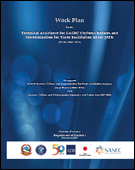 Work Plan for the Technical Assistance for SASEC Customs Reform and Modernization for Trade Facilitation under JFPRThis work plan serves as a roadmap to implement the second tranche policy actions of the SASEC Customs Reform and Modernization for Trade Facilitation Program, a policy-based loan signed between the Government of Nepal and the Asian Development Bank. Ten policy actions feature reform milestones in (i) policy and legal framework, (ii) automation, (iii) organization restructuring, and (iv) capacity development—building blocks to transform the Nepal Department of Customs into risk-based, paperless e-Customs operations, introduce customs procedures with economic impact to promote exports, and comply with WTO TFA measures and implement RKC general standards and other relevant international standards. This work plan comprises tasks designed to boost the capacity of the Customs and support delivery of its Customs Reform and Modernization Strategies and Action Plan 2017–2021. It also includes implementation arrangements, timeline, and inputs from the technical assistance (TA) attached to the Program. Author: Nepal Ministry of Finance, Department of Customs Year: 2017 Download Tags: SASEC, Customs, ADB, Nepal, Trade Facilitation Agreement  Asian Economic Integration Report 2017The 2017 Asian Economic Integration Report introduces the Asia-Pacific Regional Cooperation and Integration Index (ARCII), a composite index constructed from 26 socioeconomic indicators grouped into six dimensions: (i) trade and investment, (ii) money and finance, (iii) regional value chains, (iv) infrastructure and connectivity, (v) movement of people, and (vi) institutional and social integration. It helps capture the diversity of regional cooperation and integration, allowing Asian economies to keep track of their progress in regional integration. Within the region, ARCII shows RCI is highest in East Asia and Southeast Asia, but remains low in South Asia and Central Asia owing to gaps in infrastructure and connectivity. It is also low in the Pacific due to weak institutional and social integration. In subregional cooperation, SASEC comes third to the ASEAN and GMS. The publication highlights that regional integration can be improved through institutional and social dimensions, including efforts to remove national barriers to regional integration, adopt regional standards, and institutionalize regional frameworks, and narrowing gaps in regional connectivity and infrastructure. Author: Asian Development Bank Year: 2017 Download Tags: Regional Cooperation, Trade Facilitation, Connectivity, SASEC, GMS Least Developed Countries Report 2017This report focuses on transformational energy access for the LDCs, where 62% of people have no access to electricity. It makes a case for trade in electricity, such as the 2014 South Asian Association for Regional Cooperation framework agreement for regional cooperation on electricity among Afghanistan, Bangladesh, Bhutan, India, Maldives, Nepal, Pakistan, and Sri Lanka. International and regional trade in electricity could help lower electricity prices, mitigate power shocks, relieve shortages, and facilitate the transition to cleaner energy. Author: United Nations Conference on Trade and Development Year: 2017 Download Tags: Bangladesh, Bhutan, Maldives, Nepal, Sri Lanka, Energy, Least Developed Countries, Trade SME Competitiveness Outlook 2017 – The Region: A Door to Global TradeThe most common form of trade for small and medium-sized enterprises (SMEs) is regional trade. This report shows that regional trade agreements deliver inclusive growth, attracting value chain activity and fostering competitiveness for small firms. It provides advice for policymakers, businesses, and trade and investment support institutions. The report also includes 50 country profiles—including those of Bangladesh, Bhutan, India, Nepal, and Sri Lanka—showing SME competitiveness and export potential by region. Author: International Trade Centre Year: 2017 Download Tags: Small and Medium Enterprise, Trade, Bangladesh, Bhutan, India, Nepal, Sri Lanka Regional Cooperation and Integration in Asia and the Pacific: Implementation of the Operational Plan for Regional Cooperation and Integration, 2016–2020─Corporate Progress Report 2017Regional cooperation and integration (RCI) is a valuable means for attaining national development goals. This report reviews ADB’s progress in implementing its Operational Plan for Regional Cooperation and Integration, 2016–2020, and identifies areas for improvement. It takes a close look at progress in connectivity, competitiveness, and regional public goods and collective action through projects such as the Nepal: SASEC Customs Reform and Modernization for Trade Facilitation Program. Author: Asian Development Bank Year: 2017 Download Tags: Nepal, Energy, Trade, Customs, Myanmar, Regional Cooperation, Regional Integration, SASEC, Trade Facilitation Asia-Pacific Trade and Investment Report 2017: Channelling Trade and Investment into Sustainable DevelopmentThis report provides analyses of trends and policy developments in trade in goods and commercial services in Asia-Pacific. It shows that merchandise trade remained subdued in 2016, with South and Southwest Asia accounting for 8% of Asia-Pacific exports and 12% of Asia-Pacific imports. Foreign direct investments inflows In South and South-West Asia decreased slightly by 4% to $66 billion in 2016. The report also argues for targeted trade and investment policies that strike a balance between economic development and social and environmental development. Author: United Nations Economic and Social Commission for Asia and the Pacific Year: 2017 Download Tags: Trade, Investment, FDI, ASEAN, India, Services, South Asia, Sri Lanka, Sustainable Development Goals, UNESCAP 2017 Handbook of StatisticsThis report presents statistics and indicators on international trade, investment, and development. It includes data on developing economies in South Asia, which in 2016 accounted for about $401 billion in merchandise exports and $529 billion in merchandise imports, $192 billion in service exports and $175 billion service imports, and 6.7% gross domestic product (GDP) growth. Author: United Nations Conference on Trade and Development Year: 2017 Download Tags: FDI, South Asia, Trade, Transport, UNCTAD 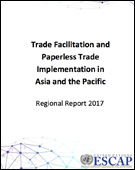 Trade Facilitation and Paperless Trade Implementation in Asia and the Pacific - Regional Report 2017Paperless trade reduces trade costs and enables trade to drive growth and sustainable development. This report shares results of the global survey on trade facilitation and paperless trade implementation, covering 44 countries in Asia and the Pacific. It covers 47 trade facilitation measures, including those involving general trade, paperless trade, cross-border paperless trade, transit, and trade for small and medium-sized enterprises. The report gives an overview of trade facilitation implementation in South and Southwest Asia, and includes Bangladesh, India, and Myanmar in its analysis of transit measures in Asia and the Pacific. Author: United Nations Economic and Social Commission for Asia and the Pacific Year: 2017 Download Tags: UNESCAP, Bangladesh, India, Least Developed Countries, Maldives, Myanmar, Small and Medium Enterprise, Trade Facilitation Agreement, Transport Facilitation, WTO Customs Clearance Procedure for Relief Materials 2017 This relief consignment procedure published by the Nepal Department of Customs act as guide for the import of relief materials in response to emergencies and disaster situations in Nepal. It identifies items that can and cannot be imported, and conditions for import, and details procedures for Customs clearance, including declaration and valuation. It also discusses provisions for temporary import or export of relief goods. Author: Department of Customs, Ministry of Finance, Nepal Year: 2017 Download Tags: Customs, Nepal, Trade Facilitation, Temporary admission 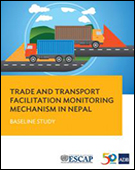 Trade and Transport Facilitation Monitoring Mechanism in NepalThis report synthesizes the business process analysis conducted on import of wool through Kolkata-Birgunj-Kathmandu, export of wool carpet from Kathmandu-Birgunj-Kolkata, and import of fabrics from Bangladesh to Nepal through Dhaka-Banglabandha-Fulbari-Panitanki-Kakarbhitta-Kathmandu. It also measures the performance of trade corridors and border crossings in Nepal, to quantify current trade and transport facilitation and provide recommendations. Findings of the study reveal bottlenecks to trade, including procedures needed to complete import/export, compounded by requirements for transiting trade through India, which further prolongs the trade process and increases the cost. The report includes specific short-term and long-term policies to improve Nepal’s trade and transport facilitation. Author: Asian Development Bank and United Nations Economic and Social Commission for Asia and the Pacific Year: 2017 Download Tags: Trade Facilitation, Nepal, Import, Export, ADB RCI Key Indicators for Asia and the Pacific 2017This report gives the latest statistics on economic, financial, environmental, and Sustainable Development Goal (SDG) indicators for the 48 regional members of the Asian Development Bank, including up-to-date figures on energy, trade, and transport. In 2016, Asia and the Pacific accounted for 40.9% of global gross domestic product (GDP). While foreign direct investment (FDI) flows declined in East Asia and Southeast Asia in 2016, FDI flows to South Asia remained stable. The average number of days required to start a business in South Asia was 16. Energy consumption is also expected to increase in the coming decades owing to increasing GDP per capita and an increase in the use of energy-consuming goods. Author: Asian Development Bank Year: 2017 Download Tags: ADB, Energy, Transport, Bangladesh, Bhutan, India, Maldives, Nepal, Southeast Asia, Sri Lanka Doing Business 2018: Reforming to Create JobsDoing Business, an annual publication of the World Bank, presents quantitative indicators on business regulations that can be compared across 190 economies and over time. The report finds that entrepreneurs in 119 economies saw improvements in their local regulatory framework, including reforms for reducing complexity in regulatory processes for starting businesses. South Asia scores well for starting a business, though it scores only an average of 33.04 for resolving insolvency. India has the highest score in South Asia for protecting minority investors. Patterns show further room for improvement across all regions and at all income levels. Author: World Bank Group Year: 2017 Download Tags: Ease of Doing Business, South Asia, WB ESCAP Newsletter - 2017 SeptemberThe ESCAP Newsletter is a monthly recap of the events and other activities of the United Nations Economic and Social Commission for Asia and the Pacific (UNESCAP). This issue highlights the ASEAN-India partnership and how it could benefit the Asia-Pacific region. Dr. Shamshad Akhtar, Executive Secretary, UNESCAP, talks about the importance of sustainable development and regional cooperation and integration. The issue also features a story on strengthening technical cooperation between UNESCAP and Myanmar. Author: United Nations Economic and Social Commission for Asia and the Pacific Year: 2017 Download Tags: ASEAN, India, Myanmar, Regional Cooperation, Regional Integration, UNESCAP The Asian Economic Integration Cooperation Agreement: Lessons for Economic and Social DevelopmentThis paper focuses on the impact of regional integration on development and poverty reduction in the Association of Southeast Asian Nations (ASEAN) economic community. It examines economic growth, rapid trade, and investment expansion and looks at challenges presented by the deterioration in trade balances in Cambodia, Laos, Myanmar, and Vietnam. It also explores the role of regional integration in addressing the development gap in ASEAN countries. Author: Amelia U. Santos-Paulino Year: 2017 Download Tags: ASEAN, Free Trade Agreements, Least Developed Countries, Myanmar, Regional Cooperation, Regional Integration, WTO Nepal Energy Sector Assessment, Strategy, and Road MapTo improve energy security and stimulate economic growth in the face of an unprecedented energy crisis, Nepal is accelerating the development of its hydropower sector. This report examines the performance of Nepal’s energy sector amid development constraints, and highlights government development plans and strategy. It assesses the Asian Development Bank’s (ADB’s) future support strategy, which sees Nepal’s energy sector as a key driver of inclusive economic growth. Author: Asian Development Bank Year: 2017 Download Tags: Energy, Nepal, SASEC, ADB, Hydropower 100% Electricity Generation through Renewable Energy by 2050: Assessment of Sri Lanka's Power SectorIn 2014, Sri Lanka met its target of generating at least 10% of renewable energy (RE) in its electricity mix in. The following year, the share of large hydro and RE further increased, while the country’s use of fossil fuels in the electricity mix decreased. This report aims to help design mechanisms that would allow Sri Lanka to reach its goal of 100% RE in electricity generation by 2050. It looks at financial interventions needed for Sri Lanka to achieve its goal while examining technical and economic challenges the country will face in reaching its goal. This report is a co-publication of the Asian Development Bank and the United Nations Development Programme. Author: Manpreet Singh et al Year: 2017 Download Tags: ADB, Cooperation, Hydropower, Sri Lanka, Renewable Energy, Trade Asian Development Outlook (ADO) Supplement: A Firmer Growth Outlook for AsiaGrowth forecast for developing Asia for 2018 is downgraded to 5.8%, from projections in the Asian Development Outlook 2017 Update in September 2017. Forecasts for the region’s inflation rates have been retained at 2.9% for 2018. For South Asia, growth outlook for 2018 is retained at 7.0%. India’s gross domestic product (GDP) growth rebounded to 6.3% in FY2017 (ending 31 March 2018), led by manufacturing. Bangladesh showed higher GDP growth for FY2017 (ended 30 June 2017) than was previously estimated. Bhutan showed stronger growth than forecast, supported by transport and communication services and construction. Growth projections for Maldives, Nepal, and Sri Lanka are in line with those in the Update. Author: Asian Development Bank Year: 2017 Download Tags: ADB, India, Bangladesh, Bhutan, Maldives, Nepal, Sri Lanka, Manufacturing Asian Development Bank and India: Fact SheetUpdated yearly, the Asian Development Bank (ADB) Fact Sheet provides social and economic indicators on India, as well as information on ADB operations and contact details. Millions of people from India have benefited from improvements to basic infrastructure and services from ADB-supported development programs. ADB has approved 205 loans totaling $35.1 billion for India, and will continue to support India through the pillars of inclusive growth, environmentally sustainable growth, and regional cooperation and integration. Author: Asian Development Bank Year: 2017 Download Tags: ADB, India, Infrastructure, Regional Cooperation, Sustainability Asian Development Bank and Sri Lanka: Fact SheetThis Asian Development Bank (ADB) Fact Sheet provides social and economic indicators on Sri Lanka and information on ADB operations in Sri Lanka and contact details. ADB has worked closely with the Government of Sri Lanka since 1966 and has provided loans, grants, and technical assistance totaling $8.4 billion. ADB assistance will focus on ensuring quality economic growth as Sri Lanka aims to reach upper-middle-income status. Author: Asian Development Bank Year: 2017 Download Tags: ADB, Sri Lanka, Development Asian Development Bank and Nepal: Fact SheetThe ADB Fact Sheet provides social and economic indicators on Nepal, as well as information on ADB operations in the country and contact details. Nepal is working toward graduation to middle-income country status and achieving the Sustainable Development Goals by 2030. ADB assistance aims to improve equitable access to education while pursuing a strategy that aims to address bottlenecks in infrastructure development in energy, transport, and urban facilities. ADB operations will also focus on agriculture, gender equality, good governance, environmental sustainability, regional cooperation, and private sector development. Author: Asian Development Bank Year: 2017 Download Tags: ADB, Nepal, Sustainable Development Goals, Infrastructure, Energy, Transport, Agriculture, Regional Cooperation, Gender Trade Profiles 2017Trade Profiles 2017 provides a series of key indicators on trade in goods and services for 196 economies, highlighting major exports and imports for each economy as well as their main trading partners. It provides a concise overview of global trade for each profile, showing detailed information about merchandise trade flows. It also features an expanded section on trade in commercial services and statistics on intellectual property. Author: World Trade Organization Year: 2017 Download Tags: GDP, Trade, WTO Transport Policies and DevelopmentThis survey reviews the current state of impact assessment of transport investments and policies on growth, inclusion, and sustainability in a developing country context. It reviews the cost and benefits of transport investment and policies in developed countries and discusses challenges in implementing transport interventions in developing countries. Author: Claudia N. Berg, Uwe Deichmann, Yishen Liu, and Harris Selod Year: 2017 Download Tags: Investment, Sustainability, Transport Measuring and Analyzing the Impact of GVCs on Economic Development (English)This report shows how the global economy is changing continuously and rapidly. It attempts to give a detailed picture of the dynamic network structure of the global economy, and tries to show how economies link up, specialize, and grow, in light of global value chains. It explains the difference between elements of an economy that are tradable and those that are non-tradable, while also presenting a picture of evolving patterns of independence. Author: Asian Development Bank Year: 2017 Download Tags: Development, WB, WTO Asian Development Bank and Bhutan: Fact SheetThe Asian Development Bank (ADB) Fact Sheet provides social and economic indicators on Bhutan, as well as information on ADB operations and contact details. Since 1982, ADB has supported Bhutan through projects in energy, finance, and trade facilitation, and transport. ADB has approved loans totaling $498.81 million, grants of $222.4 million, and $73.48 million in technical assistance for Bhutan. ADB support reflects strong emphasis on green energy production, transport connectivity, and urban infrastructure projects. To make growth more inclusive, ADB will help Bhutan through projects focusing on cross-border connectivity, skills development, and agriculture. Author: Asian Development Bank Year: 2017 Download Tags: ADB, Bhutan, Energy, Connectivity, Transport, Agriculture, Roads Asian Development Bank and Myanmar: Fact SheetUpdated yearly, this Asian Development Bank (ADB) Fact Sheet provides social and economic indicators on Myanmar, as well as information on ADB operations in the country and contact details. ADB is supporting Myanmar in promoting inclusive and sustainable economic growth, with investments focusing on infrastructure (in energy, transport, and urban and water services), education, and rural development. Regional cooperation will remain one of the key priorities. Author: Asian Development Bank Year: 2017 Download Tags: ADB, Myanmar, Sustainability, Infrastructure, Energy, Transport, Regional Cooperation Asian Development Bank and the Maldives: Fact SheetThis Asian Development Bank (ADB) Fact Sheet provides social and economic indicators on Maldives, and information on ADB operations and contact details. ADB is helping Maldives upgrade commercial and domestic harbors, ensure power supply reliability, boost economic growth, and reduce regional disparities in living standards. Projects in sustainable energy development are helping Maldives achieve carbon neutrality and reduce high fuel costs. Since 1978, ADB has approved 29 loans and grants totaling $248.53 million for Maldives, and has funded 67 technical assistance projects totaling $29.65 million. Author: Asian Development Bank Year: 2017 Download Tags: ADB, Maldives, Energy, Transport, Development, Sustainability 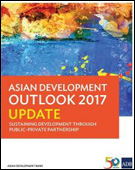 Asian Development Outlook (ADO) 2017 Update: Sustaining Development through Public-Private PartnershipDeveloping Asia is forecast to expand by 5.9% in 2017 and 5.8% in 2018, a slight upgrade from projections in the Asian Development Outlook 2017. However, growth forecast for South Asia is downgraded to 6.7% in 2017. India’s growth remains strong and most South Asian countries are expected to meet or exceed growth forecasts from April. Exceptions are Sri Lanka, where agriculture was affected by drought and floods, and Bhutan, where geological problems have constrained construction on two large hydropower projects. Growth in Nepal surged in 2017 on earthquake recovery but is slowing as agriculture struggles, following severe flooding in August 2017. Inflation forecast in South Asia is lowered to 4.2% for 2017 and 4.7% for 2018. Favorable global commodity prices, good harvests, and prudent macroeconomics are expected. Author: Asian Development Bank Year: 2017 Download Tags: Asia, Development, Sustainability, Public Private Partnerships, South Asia, India, Sri Lanka, Agriculture, Bhutan, Hydropower, Energy, Nepal The Little Green Data Book 2017Based on World Development Indicators 2017 and its online database, the Little Green Data Book 2017 looks at development and the environment through more than 50 indicators for all countries around the world. This edition features indicators on capture fisheries, aquaculture production, and marine-related areas, focusing on the economic importance of fisheries for sustainable development. Author: World Bank Year: 2017 Download Tags: Environment, WB, Development, Sustainability World Development Indicators 2017This report compiles statistics on global development, with this years’ database including more indicators covering the Sustainable Development Goals and more data disaggregated by sex, age, wealth quintile, and urban or rural location. The online database (http://data.worldbank.org) now includes more than 1,400 indicators for more than 220 economies (including those from South Asia), with some data series extending back more than 50 years. Author: World Bank Year: 2017 Download Tags: WB, Development, Sustainable Development Goals, South Asia Trans-Pacific Partnership Rules for Digital Trade in AsiaDigital trade has driven economic development by improving productivity and lowering the costs of trade in goods. The Trans-Pacific Partnership (TPP) is the first trade agreement to recognize the importance of digital trade and e-commerce, introducing new provisions that go beyond existing agreements. This paper asks why Australia, Brunei Darussalam, Japan, Malaysia, New Zealand, Singapore, and Viet Nam agreed to follow a similar set of policies for digital trade. Author: Debora Elms and Minh Hue Nguyen Year: 2017 Download Tags: Trade, Asia-Pacific The Internet of Things in the Power Sector: Opportunities in Asia and the PacificAsia’s power sector struggles to upgrade power systems and keep up with growing demand. The Internet of Things (IoT) has the potential to transform the power sector by optimizing operations and lowering costs for consumers. The power sector is already reaping the benefits of adoption of smart meters and smart thermostats, two consumer-oriented IoT applications. The Asian Development Bank has committed to smart grid projects in India, through a Green Energy Corridor and Grid Strengthening Project, and Maldives, through the Preparing Outer Islands for Sustainable Energy Development (Phase 1). Author: Arun Ramamurthy and Pramod Jain Year: 2017 Download Tags: Energy, ADB, India, Maldives, Sustainability Aid for Trade in Asia and the Pacific: Promoting Connectivity for Inclusive DevelopmentAid for Trade (AfT) is essential to promoting growth and tradability of services, and is a major catalyst for inclusive economic and structural information. This report looks at how trade performance in Asia and the Pacific is evolving, and highlights emerging trends in AfT. The report looks at cooperation projects in the energy sector, and shows how South Asia Subregional Economic Cooperation (SASEC) projects fund cross-border electricity transmission, power trade, energy efficiency, capacity building, and renewable sources of energy. The report also examines the impact of AfT on trade in services and the rise of e-commerce. Author: Asian Development Bank Year: 2017 Download Tags: Trade, Energy, SASEC, Aid for Trade, ADB World Trade Report 2017: Trade, Technology, and JobsEconomic growth over the last 25 years has been accompanied by unprecedented economic change. Over the past two decades, many countries have experienced significant transformations in the sectoral and occupational structure of employment. This report examines how technology and trade affect employment and wages and analyzes the challenges for workers and firms in adjusting to changes in labor markets. It looks at how governments could increase the positive impact of open trade and technological trade in South Asia and around the world. Author: World Trade Organization Year: 2017 Download Tags: Trade, ICT, Employment, Global Value Chains, South Asia 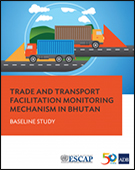 Trade and Transport Facilitation Monitoring Mechanism: Baseline Study in BhutanThis report synthesizes the business process analysis conducted on import of light motor vehicles from third countries to Bhutan via Kolkata Port, import of plastic kitchenware and tableware (melamine products) from Bangladesh to Bhutan, export of ferrosilicon from Bhutan to third countries through Kolkata Port, and export of cardamom from Bhutan to Bangladesh. It also measures the performance of trade corridors and border crossings in Bhutan, to quantify current trade and transport facilitation and provide recommendations. Findings of the study reveal bottlenecks to trade, including numerous procedures needed to complete import/export, and low speed along the trade corridors. The report includes specific short-term and long-term policies to improve Bhutan’s trade and transport facilitation. Author: Asian Development Bank and United Nations Economic and Social Commission for Asia and the Pacific Year: 2017 Download Tags: Bhutan, Trade Facilitation, Bangladesh, ADB, Transport, ADB RCI 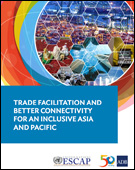 Trade Facilitation and Better Connectivity for an Inclusive Asia and PacificThis report investigates the evolution of trade costs, examines trade facilitation and paperless trade implementation, and highlights key initiatives in South Asia, including efforts by members of the South Asia Subregional Economic Cooperation (SASEC). The SASEC Trade Facilitation and Transport Working Group agreed to expand assistance to trade facilitation through technical assistance to support more efficient, transparent, secure, and service-oriented processing of cross-border trade across South Asia. Through 2025, the SASEC connectivity agenda will be better aligned with the frameworks of South Asian Association for Regional Cooperation and the Bengal Initiative for Multi-Sectoral Technical and Economic Cooperation. To help establish a trade and transport facilitation monitoring mechanism, Bangladesh, Bhutan, and Nepal conducted studies that reviewed trade and transport procedures, analyzed bottlenecks, and gave recommendations on trade and transport facilitation. Author: Asian Development Bank and United Nations Economic and Social Commission for Asia and the Pacific Year: 2017 Download Tags: ADB, Bangladesh, Bhutan, BIMSTEC, Maldives, Nepal, SAARC, India, Myanmar, SASEC, South Asia, Sri Lanka, Trade Facilitation, Transport, UNESCAP, ADB RCI 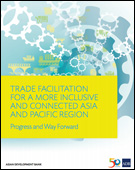 Trade Facilitation for a More Inclusive and Connected Asia and Pacific Region: Progress and Way ForwardThis report gives an overview of assessments from the 2017 global survey on trade facilitation and paperless trade in Asia and the Pacific. It looks at the implementation of trade facilitation and paperless trade measures in 44 countries in Asia and the Pacific, including how the South Asia Subregional Economic Cooperation Trade Facilitation Strategic Framework promotes development by deepening regional cooperation. The Framework covers national and subregional projects in Customs harmonization, improving cross-border facilities, and transport facilitation. The Framework also supports regulatory reforms and the development of the National Single Window Customs management system in Bangladesh, Bhutan, Maldives, and Nepal. Author: Asian Development Bank and United Nations Economic and Social Commission for Asia and the Pacific Year: 2017 Download Tags: ADB, Bangladesh, Bhutan, BIMSTEC, Maldives, Nepal, Regional Cooperation, Regional Integration, SAARC, SASEC, Standards Harmonization, Trade Facilitation, Trade Facilitation Agreement, WTO, UNESCAP, ADB RCI Myanmar’s Integration with the WorldMyanmar only recently began participating in global trade and investment. It has large untapped potential for trade and investment in agriculture and forest-based industries, and services, such as tourism and information technology. This book examines Myanmar’s access to the global market and examines the implication of Myanmar’s democratic transition, the progress of Myanmar’s industry and infrastructure, its international linkages, and options for increased integration in regional economic groups. The book also analyzes how Myanmar could exploit global value chains. Author: Prabir De and Ajitava Raychaudhuri, editors Year: 2017 Download Tags: Agriculture, Global Value Chains, Infrastructure, Investment, ICT, Myanmar, Regional Integration, Trade Regional Road Map for Implementing the 2030 Agenda for Sustainable Development in Asia and the PacificIn 2015, 150 countries set in motion the most ambitious development agenda of our time, the 2030 Agenda for Sustainable Development. Asian countries have begun translating this agenda into action through national plans and programs. However, to fully achieve the Sustainable Development Goals, countries need to examine opportunities for regional cooperation to complement the effectiveness of national mechanisms in the areas of finance, technology, capacity-building, and trade. Discussion through regional and subregional organizations can help facilitate cooperation in these key areas. Author: United Nations Economic and Social Commission for Asia and the Pacific Year: 2017 Download Tags: Regional Cooperation, SAARC, Sustainable Development Goals, Trade, UNESCAP Myanmar’s Engagement in Regional Integration: Status and Way Forward (AWP No. 169)Myanmar strategic position connects Asia’s three big markets—Association of Southeast Asian Nations, China, and India. Since 2011, Myanmar has laid down economic reforms that are unlocking the country’s potential. This working paper discusses Myanmar’s participation in regional partnerships, such as the South Asia Subregional Economic Cooperation, which it joined in 2017. It argues that such partnerships are essential in building Myanmar’s infrastructure and speeding up its growth. Author: Prabir De Year: 2017 Download Tags: ADB, ASEAN, India, Myanmar, Regional Cooperation, Regional Integration, SASEC, UNESCAP 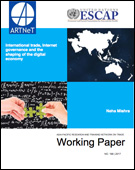 International Trade, Internet Governance and the Shaping of the Digital Economy (AWP No. 168)The connection between trade and internet governance presents complex policy challenges in today’s digital economy. This working paper highlights several observations and findings on the complex relationship between international trade and the internet. It recognizes the fact that the internet is not only driven by economic factors, but is a complex phenomenon shaped by political and social engagement, technical efficiency, and cultural and moral considerations. It sees the importance of synergizing international trade and the internet, and recommends that the World Trade Organization and other trade institutions develop mechanisms to consult internet governance institutions such as the Internet Engineering Task Force, World Web Wide Consortium, Internet Corporation for Assigned Names and Numbers, International Telecommunications Union, Internet Society, and the Internet Governance Forum. Author: Neha Mishra Year: 2017 Download Tags: ICT, Trade Facilitation, UNESCAP, WTO Together We Deliver: 50 Stories of ADB's Partnerships in Asia and the PacificThis special edition of Together We Deliver tells 50 stories that highlight the importance of good partnerships in Asia and the Pacific in meeting complex development challenges. In South Asia, ADB has supported infrastructure development and social programs, helping lift people out of poverty in a diverse, rapidly urbanizing subregion. The South Asia Subregional Economic Cooperation Roads Improvement Project, for instance, is set to widen 160 kilometers of Nepal’s East–West Highway, which connects Nepal to India. The improved roads will provide faster and better access to social services and economic opportunities, and will facilitate national and regional integration. Author: Asian Development Bank Year: 2017 Download Tags: ADB, Economic Corridor Development, India, Nepal, Regional Integration, Roads, SASEC, South Asia, Transport State of Electricity Access Report (SEAR) 2017This report presents insights drawn from emerging innovative business and delivery models so that governments, donors, the private sector, civil society organizations, and practitioners could develop interventions to close the electricity access gap. It shows that urgent measures are needed to speed up access to modern energy services in Sub-Saharan Africa and South Asia and that responses will have to be supported by a conducive environment of the right institutions, policies, strategic planning, and incentives. Author: World Bank Year: 2017 Download Tags: Energy, South Asia, Sustainable Development Goals 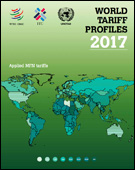 World Tariff Profiles 2017World Tariff Profiles is a joint publication of the World Trade Organization (WTO), International Trade Centre, and the United Nations Conference on Trade and Development devoted to information on market access for goods. It contains comprehensive data on tariffs and non-tariff measures imposed by over 170 countries and Customs territories. This year’s edition takes a close look at export diversification, analyzing to what extent economies have diversified their exports over time. Many countries make it a policy to diversify exports to obtain bigger market shares. An overview of export diversification shows how India, Myanmar, Sri Lanka, Bangladesh, and Bhutan have grown in the last two decades. Bangladesh in particular has achieved significant increase in terms of both product coverage and market reach. Author: World Trade Organization, International Trade Centre, and the United Nations Conference on Trade and Development Year: 2017 Download Tags: Bangladesh, Bhutan, Export, India, Maldives, Myanmar, Nepal, Sri Lanka, Tariffs, Trade, UNCTAD, WTO Asian Development Bank and Bangladesh: Fact SheetThis Asian Development Bank (ADB) Fact Sheet provides social and economic indicators on Bangladesh, as well as concise information on ADB's operations in Bangladesh and contact information. ADB supports Bangladesh’s efforts to generate inclusive and sustainable growth, and achieve the Sustainable Development Goals. ADB has provided Bangladesh with $18.3 billion for 269 loans, $252.4 million for 422 technical assistance projects, and $787.10 million for 35 grants. ADB supports projects contributing to regional connectivity to foster development along economic corridors and co-finances the SASEC Railway Connectivity: Akhaura-Laksam Double Track Project. Author: Asian Development Bank Year: 2017 Download Tags: ADB, Bangladesh, Economic Cooperation, Energy, Sustainable Development Goals, Sustainability, SASEC 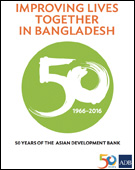 Improving Lives Together in Bangladesh: 50 Years of the Asian Development BankThis report highlights the milestones in the Bangladesh-Asian Development Bank (ADB) partnership since 1973, including projects in transport and energy that have shown sustained development results. Development contributions from ADB-assisted projects in Bangladesh include the Second South Asia Subregional Economic Cooperation Program (SASEC) Bangladesh-India Electrical Grid Interconnection Project that will help double electricity imports from India from the current 500 megawatts; the $505 million SASEC Railway Connectivity, Akhaura Laksam Double-Track Project, which will help railways meet passenger and freight demand; the SASEC Road Connectivity Project, which is upgrading a 70 km stretch along a corridor connecting the northwest to Dhaka to support domestic and subregional trade; and the SASEC Trade Facilitation Program, which aims to reduce non-tariff barriers by adopting international Customs administration protocols, upgrade existing Customs management systems, and establish a web-based electronic trade portal. Author: Asian Development Bank Year: 2017 Download Tags: SASEC, ADB, Bangladesh, India, Railway, Energy, Transport ESCAP Newsletter - June 2017The ESCAP Newsletter is a monthly recap of the key events, publications and other activities of the United Nations Economic and Social Commission for Asia and the Pacific (UNESCAP). It highlights the key issues that the UNESCAP works on and how the organization works to support member states in reaching the objectives of the Sustainable Development Goals (SDGs). This issue highlights the 73rd Commission Session of Asia-Pacific leaders on "Regional Cooperation for Sustainable Energy," which culminated with the adoption of resolutions advancing transport connectivity and sustainable energy development. Author: United Nations Economic and Social Commission for Asia and the Pacific Year: 2017 Download Tags: Energy, Regional Cooperation, UNESCAP, Sustainable Development, Sustainable Development Goals SARSO News: Vol. 31, No. 2The South Asian Regional Standards Organization (SARSO) newsletter features updates on SARSO events and activities. This issue features the publication of three South Asian Association for Regional Cooperation standards on food quality and safety, and the workshop on the importance of ISO 14001—which aims to help organizations improve environmental performance through the efficient use of resources and reduction of waste—and its impact on the environment and trade. It also has reports on Workshop on Conformity Standards held in New Delhi, India, and the Enhancing Capacity for Sanitary and Phytosanitary (SPS) Measures for Safe Trade in Animal and Animal Products in South Asia held in Kathmandu, Nepal. Author: South Asian Regional Standards Organization Year: 2017 Download Tags: Agriculture, Bangladesh, Bhutan, India, Nepal, SAARC, SARSO, South Asia, Standardization, Trade Asian Development Outlook (ADO) 2017 Supplement: Cautious Optimism for Asia's OutlookWith export demand stronger than expected in the first quarter of 2017, Asia’s GDP is expected to expand faster than forecast in April in Asian Development Outlook 2017. Developing Asia is now expected to grow by 5.9% in 2017. The smaller upgrade in the 2018 growth forecast—5.7% in ADO 2017 to 5.8%—reflects a cautious view on the pace of the turnaround in external demand. Excluding the newly industrialized economies, growth projections for the region are revised up to 6.4% for 2017 and to 6.3% for 2018. India is expected to achieve April forecasts of 7.4% growth in 2017 and 7.6% in 2018, primarily from strong consumption. Growth projections for South Asia are likewise maintained as prospects remain robust. Author: Asian Development Bank Year: 2017 Download Tags: ADB, Development, Export, Bangladesh, India, South Asia World Trade Statistical Review 2017The World Trade Statistical Review looks at the last 10 years and examines the latest developments in world trade, with a detailed analysis of the most recent trends for trade in goods and services. The book gives information on the participation of India, Bangladesh, and other South Asian economies in world trade, and highlights trends in the use of trade-facilitating measures. It also gives information on the implementation of the WTO Trade Facilitation Agreement and regional trade agreements, such as the South Asian Free Trade Arrangement. Author: World Trade Organization Year: 2017 Download Tags: Export, Least Developed Countries, Aid for Trade, SAFTA, South Asia, Trade Facilitation, WTO, Bangladesh, Bhutan, India, Maldives, Myanmar, Nepal, Sri Lanka Win-Win: How International Trade Can Help Meet the Sustainable Development GoalsThis book aims to demonstrate to policy makers how international trade can contribute to achieving the Sustainable Development Goals (SDGs). Trade can promote income growth, which can then support sustainable development. In addition, there are also direct links between trade and sustainable development, such as trade’s effect on the price and availability of health, education, energy, and other important services. This book maps out a triple-win scenario where good trade policy spurs international trade, contributes to development-friendly outcomes, and helps achieve the SDGs. Author: Matthias Helble and Ben Shepherd, eds. Year: 2017 Download Tags: Bangladesh, India, Maldives, Nepal, Services, South Asia, Sustainability, Sustainable Development Goals Trade and Transport Facilitation Monitoring Mechanism: Baseline Study in BangladeshThis report synthesizes the business process analysis conducted on the export of plastic kitchenware and tableware from Bangladesh to Bhutan through Burimari land port, and the import of lentils from Nepal to Bangladesh through Banglabandha land port, as well as studies on trade corridors and border crossings in Bangladesh, to quantify current trade and transport facilitation in Bangladesh through a set of indicators. Findings of the study reveal bottlenecks to trade, including costly one-time procedures for a new trader, numerous documents and copies required to complete export and import processes, and low speed along the trade corridors. This report includes specific short-term and long-term policies to improve Bangladesh’s trade and transport facilitation. Author: Asian Development Bank Year: 2017 Download Tags: Trade Facilitation, Transport, Bhutan, Bangladesh, Nepal, SASEC, ADB RCI 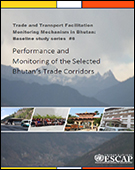 Performance and Monitoring of Selected Bhutan’s Trade CorridorsThis report on performance and monitoring of two corridors, the Kolkata-Phuentsholing corridor and the Burimari-Phuentsholing corridor is the sixth of a six-part study on Trade and Transport Facilitation Monitoring Mechanism (TTFMM) in Bhutan. The study finds that average speed along the corridor is very low. Along the Kolkata-Phuentsholing corridor, average speed with delays is 9 kilometers per hour (km/h) and without delays is 15 km/h. Along the Burimari-Phuentsholing corridor, average speed with delays is about 5 km/h and without delays is 16 km/h. The challenges to ensuring efficient transport along the corridor remain significant, yet the study sees tremendous opportunities for improvement, and raises the importance of continuous and effective monitoring to observe whether trade and transport performance along the corridor improve over time. Author: United Nations Economic and Social Commission for Asia and the Pacific Year: 2017 Download Tags: UNESCAP, Bhutan, Trade Facilitation, Transport Time Release Study in PhuentsholingThis Time Release Study report undertaken at Phuentsholing Land Border Crossing Station in Bhutan is the fifth of a six-part study on Trade and Transport Facilitation Monitoring Mechanism (TTFMM) in Bhutan. According to the study, the average time taken for clearance of import goods from India is 58 minutes for taxable goods and 28 minutes for non-taxable/exempted goods. Imports from third countries take around 16 hours for taxable goods and 7 hours for non-taxable/exempted goods. Export of goods to India and third countries follow the same procedure, with around 13 minutes on the average needed to clear export goods. Specific recommendations are given to further enhance the efficiency of clearance of goods at the borders, including conducting the TRS on a regular basis. Author: United Nations Economic and Social Commission for Asia and the Pacific Year: 2017 Download Tags: UNESCAP, Trade Facilitation, Bhutan Business Process Analysis of Export of Ferro Silicon from Bhutan to the Third CountriesThis business process analysis report on the export of Cardamom from Bhutan to Bangladesh via Phuentsholing-Jaigaon-Changrabandha-Burimari is the fourth of a six-part study on Trade and Transport Facilitation Monitoring Mechanism (TTFMM) in Bhutan. According to the study, it takes 29 days to complete all export procedures for new traders. The process is reduced to 26.5 days without the first time procedures. Total cost to export a typical truckload of two metric tons of cardamom is around $654, with one-time procedures amounting around $308. 24 documents are needed to complete the export process, with some documents requiring extra copies, numbering to as much as 71. Specific recommendations are given to improve trade in this commodity. Author: United Nations Economic and Social Commission for Asia and the Pacific Year: 2017 Download Tags: Bangladesh, Bhutan, Trade Facilitation, Transport Business Process Analysis of Import of Kitchen and Table Wares of Plastics (Melamine Products) from Bangladesh to BhutanThis business process analysis report on the import of kitchen and table wares (melamine products) from Bangladesh to Bhutan through Burimari-Changrabandha-Jaigaon-Phuentsholing-Thimphu is the second report of a six-part study on Trade and Transport Facilitation Monitoring Mechanism (TTFMM) in Bhutan. Study findings reveal it takes 16 days to import melamine products from Bangladesh, with costs amounting to around $719 for a truckload. 33 documents are needed to complete the 15 processes, with 12 documents requiring extra copies. Specific recommendations are given to improve trade in this commodity. Author: United Nations Economic and Social Commission for Asia and the Pacific Year: 2017 Download Tags: Business Process Analysis of Import of Light Motor Vehicles from the Third Countries to Bhutan via Kolkata PortThis business process analysis report on the import of light motor vehicles (LMVs) from third countries to Bhutan via Kolkata Port is the first report of a series of a six-part study on Trade and Transport Facilitation Monitoring Mechanism (TTFMM) in Bhutan. Study findings reveal it takes 28.5 days to import LMVs from the Republic of Korea, with costs amounting to around $1,289 to complete the import procedures, not including the applicable duty and taxes payable in Bhutan. 39 documents are needed to complete the import process, with 12 documents requiring extra copies. Specific recommendations are given to improve trade in this commodity. Author: United Nations Economic and Social Commission for Asia and the Pacific Year: 2017 Download Tags: UNESCAP, Bhutan, Trade Facilitation, Transport Lessons from ADB Transport Projects: Moving Goods, Connecting People, and Disseminating KnowledgeThis publication shares 20 case stories from the Asian Development Bank bearing practical lessons for transport projects across Asia and the Pacific region under different socioeconomic and political situations. The book includes reports on improving aviation in Bhutan, working on computerized transport and trade logistics in Nepal, and constructing Sri Lanka's Greenfield Highway, and the role policy plays in those projects. It also draws lessons from how India's road development increased rural communities' access to public services and economic opportunities, and how participatory processes in selecting road improvement projects in Bangladesh provide a model for long-term plan for road maintenance. Author: Asian Development Bank Year: 2017 Download Tags: ADB, Bangladesh, Bhutan, India, Nepal, Railway, Sri Lanka, Transport, ADB RCI Digital Trade Facilitation: Paperless Trade in Regional Trade AgreementsMost regional trade agreements now feature one or more measures for electronically exchanging trade-related information. These measures are becoming essential to maintaining trade competitiveness and enabling effective participation in cross-border e-commerce. This paper examines the extent to which measures enabling paperless trade are included in regional trade agreements (RTAs), such as the Association of Southeast Asian Nations-India Free Trade Agreement. India leads the region with the highest number of RTAs involving paperless trade measures. Asia-Pacific RTAs now increasingly cover specific areas of paperless trade such as electronic certificates of origin and sanitary and phytosanitary certificates. Author: Yann Duval and Kong Mengjing Year: 2017 Download Tags: ADB, ASEAN, Free Trade Agreements, India, Regional Cooperation, Trade Facilitation, UNESCAP, WTO World Investment Report 2017This report presents foreign direct investment (FDI) trends and prospects at global, regional and national levels. FDI flows to developing Asia contracted by 15% to $443 billion in 2016. This decline was relatively widespread, except in South Asia, where several countries including Bangladesh and Nepal are expected to receive more FDI in the coming years. The report investigates the internationalization patterns of digital multinational enterprises, as well as the effect of digitalization on global companies across all industries. It provides insights to policymakers on how the digital economy impacts investment policies and how investment policy can support digital development, with a view toward achieving the SDGs. Author: United Nations Conference on Trade and Development Year: 2017 Download Tags: FDI, Global Value Chains, Investment, Policy, South Asia, UNCTAD, Bangladesh, India, Nepal Regional Cooperation for Sustainable Energy in Asia and the PacificCountries in the Asia-Pacific region face multiple energy-related challenges, which are driving transformation of energy systems. Addressing these energy challenges is an integral part of implementing the 2030 Agenda for Sustainable Development, including ensuring access to affordable, reliable, sustainable, and modern energy for all. This report analyzes challenges in the Asia-Pacific region and its efforts to accelerate the energy transition to achieve Sustainable Development Goal 7. Author: United Nations Economic and Social Commission for Asia and the Pacific Year: 2017 Download Tags: Asia-Pacific, Energy, Sustainability, Sustainable Development Goals, UNESCAP, Bangladesh, Bhutan, India, Maldives, Myanmar, Nepal, Sri Lanka 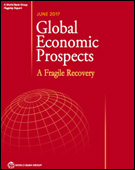 June 2017 Global Economic Prospects: A Fragile RecoveryThe World Bank forecasts that global growth will strengthen to 2.7% in 2017 amid a pickup in manufacturing and trade, rising confidence, favorable global financing conditions, and stabilizing commodity prices. In South Asia, growth is projected to remain strong at 6.8% in 2017. India is recovering from the temporary adverse effects of the end-2016 withdrawal of large-denomination currency notes. Activity in Bangladesh is moderating, reflecting a pullback in domestic demand and industrial production. Regional growth is expected to steady in 2018-2019, reaching an average of 7.2%, supported by strong domestic demand, a small rise in exports, and strong foreign direct investment. The regional outlook has been slightly revised down from January, reflecting a more protracted recovery in private investment in India than previously expected. Author: World Bank Group Year: 2017 Download Tags: WB, Bangladesh, FDI, India, Manufacturing, South Asia, Trade Eradicating Poverty and Promoting Prosperity in a Changing Asia-PacificThis report explores five long-term trends in the Asia-Pacific region that will shape approaches to poverty alleviation and the prospects for achieving prosperity: regional economic cooperation and integration; rural–urban transitions; demographic changes; ICT access and connectivity; and demand for natural resources. It examines the changing development context in South Asian and other economies. It also looks at opportunities created by regional cooperation and integration that intend to bring about shared economic benefits. Author: United Nations Economic and Social Commission for Asia and the Pacific, Asian Development Bank, United Nations Development Programme Year: 2017 Download Tags: ADB, Connectivity, ICT, Regional Cooperation, Sustainability, UNESCAP, UNDP, Bangladesh, Bhutan, India, Maldives, Nepal, Sri Lanka 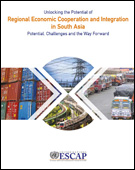 Unlocking the Potential of Regional Economic Cooperation and Integration in South AsiaAt a modest 6% of total trade, intraregional trade in South Asia stands at less than one third of its full potential. Trade barriers and inadequate infrastructure have cost South Asia over US $54 billion per year in lost export opportunities. With 309 million people living on less than $1.90 a day—the largest concentration of poverty in the world—South Asia should urgently pursue broad-based regional economic cooperation that could enable effective responses to the subregion’s developmental challenges. This report examines the state of economic integration in South Asia and identifies potential areas for further strengthening subregional linkages. It provides recommendations on policy actions to increase market integration, improve connectivity, boost investment in infrastructure development, and tackle shared vulnerabilities and risks. It calls for the consolidation and upgrading of existing trade and investment cooperation initiatives into a South Asia Comprehensive Economic Partnership. Author: United Nations Economic and Social Commission for Asia and the Pacific Year: 2017 Download Tags: BIMSTEC, Investment, Regional Cooperation, SAARC, South Asia, Sustainability, Sustainable Development, Trade, UNESCAP, Bangladesh, Bhutan, India, Maldives, Myanmar, Nepal, Sri Lanka Can Online Markets Make Trade More Inclusive? Technology-driven online trade reduces income inequality and makes trade more inclusive. To fully realize these new gains from trade, governments and export promotion agencies should address barriers to e-commerce. Technology made available by online markets has significantly reduced the cost of entry into international markets for small and medium-sized firms, which can now reach more distant consumers and create a global reputation as a seller at very low costs. Online firms, even those smaller than traditional offline firms, export, and this paper shows that online markets help reduce income inequality by providing smaller firms access to international markets. Author: Andreas Lendle and Marcelo Olarreaga Year: 2017 Download Tags: ADB, ICT, India, Trade Climbing Higher: toward a Middle-income NepalNepal is experiencing modest growth but brisk poverty reduction. It has halved the poverty rate in just seven years and witnessed an equally significant decline in income inequality. Yet Nepal remains one of the poorest and slowest-growing economies in Asia, with per capita income falling behind its regional neighbors. The report discusses the need for comprehensive policy reform to address the country’s challenges in becoming a lower-middle-income country by 2030. The report outlines suggested reforms to facilitate greater investment and improved productivity, build new sources of growth, and deepen human capital. Author: World Bank Group Year: 2017 Download Tags: Employment, Investment, Nepal, Poverty Reduction, Trade, Transport, WB Growth Slowdowns, Middle-Income Trap, and Demographic Profile in South AsiaThis paper examines how investment in human capital is critical for innovation. Analyzing the different growth-promoting factors in South Asian economies, with a focus on demographics, and factors that can help shift middle-income countries to high-income countries, it concludes that economic transition is affected by firms’ productive advantages—ability to compete with high-skilled producers, low-wage exporters—and education-based growth, which can help advance the country's technological capacity. Author: S. P. Jayasooriya Year: 2017 Download Tags: Economics, Employment, Manufacturing, Economic Corridor, South Asia 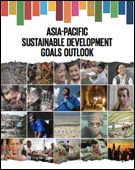 Asia-Pacific Sustainable Development Goals OutlookThis outlook report on the Sustainable Development Goals (SDG) offers an overview of the issues confronting the Asia and the Pacific region in eradicating poverty. Calling for greater synergies and collaboration, this report underscores that climate change and growth policies, including initiatives to improve access to energy and other forms of infrastructure, must also correspond to poverty-reduction strategies. The first knowledge product under a renewed partnership between the Economic and Social Commission for Asia and the Pacific, the Asian Development Bank, and the United Nations Development Programme, this report brings together experts and practitioners in the hope of inspiring new ideas to achieve the 2030 agenda. Author: United Nations Economic and Social Commission for Asia and the Pacific, Asian Development Bank, and United Nations Development Programme Year: 2017 Download Tags: Regional Cooperation, Trade Facilitation, Poverty Reduction, South Asia 2016 Development Effectiveness ReviewThe Development Effectiveness Review tracks development progress in Asia and the Pacific and monitors the Asian Development Bank’s (ADB) effectiveness 2010-2016. For South Asia, ADB shares results in regional cooperation, energy, and road and rail transport. ADB also approved $4.4 billion in financing for projects in South Asia during 2016. The Review includes details of ongoing and newly approved projects. Author: Asian Development Bank Year: 2017 Download Tags: ADB, Asia-Pacific, Development, Poverty Reduction, Regional Cooperation, Regional Integration, Roads, Transport, Bangladesh, Bhutan, India, Maldives, Nepal, Sri Lanka The Little Data Book on Information and Communication TechnologyThis book presents quick indicators for more than 200 countries showing data on key indicators of information and communications technology (ICT), including access, quality, affordability, efficiency, sustainability, and applications. It includes data for Bangladesh, Bhutan, India, Maldives, Myanmar, Nepal, and Sri Lanka. Author: World Bank and International Telecommunications Union Year: 2017 Download Tags: Bangladesh, Bhutan, ICT, India, Maldives, Myanmar, Nepal, Sri Lanka, South Asia, WB ADB Annual Report 2016The Asian Development Bank (ADB) 2016 Annual Report provides a complete picture of ADB’s performance in the reporting year. In 2016, South Asia sustained its rapid economic growth, expanding by 6.6% despite global headwinds. ADB approved $4.4 billion in loans and grants covering 30 projects in South Asia. ADB also supported the development of the South Asia Subregional Economic Cooperation (SASEC) Vision, which articulates the region’s potential as an integrated entity. SASEC countries adopted the partnership’s first comprehensive and long-term Operational Plan covering 2016-2025, defining strategic objectives and operational priorities. The Operational Plan identifies over 200 potential projects requiring more than $120 billion in development assistance over the next five years. Author: Asian Development Bank Year: 2017 Download Tags: ADB, SASEC, South Asia 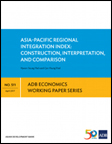 Asia-Pacific Regional Integration Index: Construction, Interpretation, and ComparisonDeeper regional integration expands markets, helps maximize the efficiency of resource allocation, and boosts productivity and investment opportunities, all serving stronger economies. This study proposes a regional integration index for Asia and the Pacific, the Asia-Pacific Regional Integration Index (APRII), comprising 26 indicators that measure various aspects of regional integration along six dimensions: trade and investment integration, money and finance integration, regional value chains, infrastructure and connectivity, free movement of people, and institutional and social integration. In the overall APRII, India ranks 14th—scoring closely to the Asia region integration average of 0.473—and scores highest on regional value chains and institutional and social integration. Nepal ranks 15th, scoring highest on regional value chains and trade and investment integration. Bangladesh and Sri Lanka rank 18th and 20th, respectively, and score highest on regional value chains. Maldives ranks 21st, scoring highest on free movement of people. Myanmar and Bhutan ranks 26th and 27th, and both score highest on trade and investment integration. In the overall regional integration indexes of selected Asian subregions, South Asia ranks 4th. Author: Hyeon-seung Huh, Cyn-Young Park Year: 2017 Download Tags: Regional Integration, Nepal, Bangladesh, Maldives, Myanmar, Bhutan 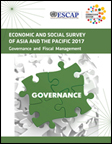 Economic and Social Survey of Asia and the Pacific 2017The 2017 edition of UNESCAP’s Economic and Social Survey of Asia and the Pacific underscores the need to better address the region's pressing challenges due to rising trade protectionism, heightened global uncertainty, and rapid growth in the previous years. Better governance and effective institutions can help Asia and the Pacific countries cope with steady but modest growth and rising inequalities, as well as environmental degradation, by helping them gain access to a skilled labor force, improve investment prospects, and sustain innovation—enhancing their level and pace of productivity, improving their long-term economic prospects. In South Asia, where most households depend entirely on labor income, decent and high-productivity jobs are needed to help mitigate high levels of poverty. The report also highlights the need to manage climate change, which threatens to undermine the region's economic development gains. Author: United Nations Economic and Social Commission for Asia and the Pacific Year: 2017 Download Tags: UNESCAP, South Asia, Trade Basic Statistics 2017Basic Statistics 2017 contains development indicators for 45 economies in the Asia and Pacific Region, including the seven SASEC countries, Bangladesh, Bhutan, India, Maldives, Myanmar, Nepal, and Sri Lanka. It includes selected indicators of the Sustainable Development Goals (SDGs) such as the proportion of population living below $1.90 (PPP) a day, proportion of population with access to electricity, renewable energy share in the total final energy consumption, unemployment rate, total official flows for infrastructure, and trade balance. Author: Asian Development Bank Year: 2017 Download Tags: Energy, Trade Facilitation, Transport, Sustainable Development Goals, Bangladesh, Bhutan, India, Maldives, Myanmar, Nepal, Sri Lanka Clean Energy Financing Partnership Facility: Annual Report 2016The Asian Development Bank (ADB) established the Clean Energy Financing Partnership Facility, comprising the Clean Energy Fund, the Asian Clean Energy Fund, the Carbon Capture and Storage Fund, and the Canadian Climate Fund for the Private Sector in Asia, to assist developing member countries improve energy security, and transition to low-carbon use through cost-effective investments in April 2007. The Facility aims to help the energy sector's aim of contributing around $3 billion to climate mitigation, to help ADB achieve its scaled up target of doubling its annual climate financing to $6 billion by 2020, with $4 billion for climate mitigation and $2 billion for climate adaptation. This report highlights overall implementation progress and operational results of the Facility in 2016. Author: Asian Development Bank Year: 2017 Download Tags: 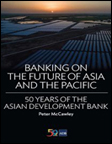 Banking on the Future of Asia and the Pacific: 50 Years of the Asian Development BankThis book tells the five-decade history of the Asian Development Bank (ADB), illustrating how the multilateral bank has grown and expanded, tackling Asia and the Pacific region’s economic development, and the evolution of its international development agenda. It discusses how ADB has helped promote regional cooperation and integration by developing subregional cooperation programs, including SASEC, which was formally established in 2001 as a project-based initiative to promote economic cooperation through the enhancement of cross-border connectivity and facilitation of trade. In 2006, the ADB Board approved the Regional Cooperation and Integration (RCI) Strategy based on four pillars: subregional economic cooperation on cross-border infrastructure and related software, trade and investment cooperation and integration, monetary and financial cooperation and integration, and cooperation in regional public goods. The RCI strategy envisaged ADB as a money bank, as a knowledge bank, as a capacity builder, and as an honest broker. Author: Peter McCawley Year: 2017 Download Tags: ADB, Development, Regional Cooperation, SASEC SASEC Powering Asia in the 21st Century SASEC Powering Asia in the 21st Century defines the SASEC Vision, framing the SASEC partnership in the larger context of the subregion’s collective growth and development by articulating shared aspirations of the SASEC countries (Bangladesh, Bhutan, India, Maldives, Myanmar, Nepal, and Sri Lanka), and setting the path to achieve these through regional collaboration. The SASEC Vision lays out a subregional transformative opportunity by leveraging natural resources, promoting industry linkages for the development of regional value chains, and expanding the region’s trade and commerce through the development of subregional gateways and hubs. This document is supplemented by SASEC Vision – Myanmar. Author: South Asia Subregional Economic Cooperation Year: 2017 Download Tags: SASEC, Trade Facilitation, Transport, Energy, ADB RCI 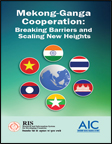 Mekong-Ganga Cooperation: Breaking Barriers and Scaling New HeightsThe Mekong-Ganga Cooperation (MGC) promotes intra-regional collaboration among Cambodia, India, Lao PDR, Myanmar, Thailand and Vietnam in the areas of trade, tourism, culture, education, and transport and communications. This book reviews how MGC cooperation has grown since MGC's inception in 2000, including expansion of their economic and cultural relations. Under India's Act East Policy, MGC has gained further momentum – endorsing a Plan of Action 2016-2018, and planning extended connectivity of the India-Myanmar-Thailand Trilateral Highway to Cambodia, Laos, and Vietnam. This report outlines important discussion points on trade, regional value chains, foreign direct investment, physical and digital connectivity, border connectivity, and cultural relations, to strengthen India and the Association of Southeast Asian Nation linkages through MGC. Author: Research and Information System for Developing Countries and ASEAN-India Centre Year: 2017 Download Tags: ASEAN, India, Southeast Asia, South Asia, Trade, Trade Facilitation Global Energy InterconnectionSustainable energy and climate change are major global concerns, yet three billion people around the world rely on wood, coal, or animal waste for cooking and heating. The interconnection of grids would open up opportunities for resource sharing and bring clean energy to much more of the world. This paper assesses benefits and outlines policy, technical, and economic preconditions for global energy interconnection. It analyzes global transmission scenarios and evaluates their impact on energy supplies and the environment. It also gives recommendations for setting standards, and where stakeholder involvement is necessary. Author: International Electrotechnical Commission Year: 2017 Download Tags: Energy, India, Nepal, Policy, Standardization, Sustainability, Trade, South Asia Implications of Brexit to the Asia-Pacific Region: with a Focus on Least Developed Countries (Trade Insights: Issue No. 20)This issue of Trade Insights, published by United Nations Economic and Social Commission for Asia and the Pacific, discusses how possible Brexit scenarios could adversely affect least developed countries in the Asia-Pacific region. Simulation results show that potential reduction in exports to the United Kingdom for fish, clothes, textiles, footwear, and other key items can range from 16% to 50% of their current export value. According to the study, countries heavily exposed to Brexit-induced risks must analyze the extent of such impact and engage the United Kingdom in discussions in order to limit negative impact. Author: Louis Graham, Arun Jacob, and Anders K. Møller Year: 2017 Download Tags: Asia-Pacific, Least Developed Countries, South Asia, Trade, UNESCAP, India, Bangladesh, Maldives, Myanmar, Nepal, Sri Lanka Emerging Trans-Regional Corridors: South and Southeast AsiaThis volume gathers perspectives from South Asia and Southeast Asia on trans-regional economic corridors, focusing on four planned projects—the Indo-Pacific Economic Corridor; the Bangladesh, China, India, and Myanmar Economic Corridor; the Maritime Silk Road initiative; and the Trans-Himalayan Economic Corridor. It underscores both opportunity and challenges promised by the economic corridors, discussing the socio-economic, environmental, security and political concerns from various stakeholders, while taking into account the rise of India and China as strong states and markets. This study also highlights the importance of upgrading India's infrastructure to promote connectivity to connect the region's economies. Author: K. Yhome and Rajeev Ranjan Chaturvedy, eds. Year: 2017 Download Tags: Asian Development Outlook 2017: Transcending the Middle-Income Challenge The Asian Development Outlook 2017 forecasts 5.7% growth for developing Asia in 2017 and 2018, and 7% and 7.2% for South Asia in 2017 and 2018. Resumption of growth in South Asia follows the brief slowdown in 2016 due to decline in fixed investment and impact of demonitization on trade and commerce. Growth in India is forecast at 7.4% in fiscal 2017 and 7.6% in 2018. In Bhutan, growth is expected to accelerate to 8.2% in 2017, with expanded investment in hydropower for export, and added capacity in electricity generation. Nepal's growth is expected to revive to 5.6% in 2017 with increased post-earthquake reconstruction and more reliable electricity. Author: Asian Development Bank Year: 2017 Download Tags: ADB, India, Bhutan, Nepal, South Asia Trade and the Post-2015 Development AgendaTrade and services are instrumental in achieving the Sustainable Development Goals. While openness to trade improves economic growth prospects, sound trade policy and efforts to reduce the costs of trade are necessary to bridge the link between trade growth and poverty reduction. For low income countries, there is still great scope to leverage trade for development, and pursue better access to a products and services to improve welfare, which can significantly contribute to economic development. In keeping with the post-2015 development agenda, this paper recommends sustained efforts by governments to reduce trade costs, support policy reforms to improve services trade, and focus on trade cost reduction and services trade facilitation. Author: Bernard Hoekman Year: 2017 Download Tags: Trade Facilitation, Services, Sustainable Development, Poverty Reduction, ADB 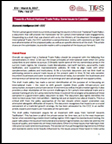 Trade Intelligence for the Private Sector Vol 17 – Towards a Robust National Trade PolicyThis paper provides an overview of the Ceylon Chamber of Commerce's (CCC) comments on the draft national trade policy for Sri Lanka prepared by Sri Lanka's Ministry of Development Strategies and International Trade. CCC's review focuses on ten key issues—trade liberalization; multilateral trading agreements, global value chains, global production networks; revenue considerations; innovation and technology upgrades; institutional reforms; regulatory reforms; government support for the private sector; rise of protectionism; digital trade and e-commerce; and future of existing bilateral and regional agreements. The Chamber puts forward that alongside a refocusing of Sri Lanka's trade policies toward international trade, new trade policy should tackle issues that arose from the current framework and be aligned with policies and institutions. It highlights the need for a forward thinking national trade policy that will improve Sri Lanka's competitiveness, and encompass interests of today's private sector as well as tomorrow's businesses and entrepreneurs. Author: CCC Economic Intelligence Unit Year: 2017 Download Tags: Sri Lanka, Economic Growth, Trade Facilitate Trade for Development: Aid for Trade The Aid for Trade program has been providing support to developing economies in tackling obstacles to growth through better facilitation of trade in the last 10 years. Since its launch in 2006, a total of $308 billion has been disbursed to finance aid-for-trade programs and projects, which are working to reduce trade and transport costs, promote trade expansion, and achieve economic and social objectives. As high trade costs persist in keeping developing countries from fully exploiting their trade and development potential, the Aid for Trade program remains highly relevant, and will help developing economies, including landlocked and small and vulnerable economies, achieve the 2030 Agenda for Sustainable Development. Author: William Hynes and Frans Lammersen Year: 2017 Download Tags: Trade, Development, Aid for Trade, Trade Facilitation, Transport, Bangladesh, Bhutan, Myanmar, Nepal, Least Developed Countries  Development of East Coast Economic Corridor and Vizag-Chennai Industrial CorridorThe East Coast Economic Corridor (ECEC)—India’s first coastal corridor—is an integrated economic development initiative that is expected to help pursue industrialization and integrate domestic companies into the global value chains of Southeast Asia and East Asia. Its development will start with Vizag–Chennai Industrial Corridor (VCIC), which covers about 800 kilometers and includes several ports and major industrial centers. This paper discusses strategies to consider when trying to improve shipping and air connectivity in the ECEC and Vizag–Chennai Industrial Corridor (VCIC). It stresses the importance of infrastructure development and regulatory reforms that facilitate increased connectivity. Author: Pritam Banerjee Year: 2017 Download Tags: Bangladesh, Connectivity, Economic Corridor, India, Infrastructure, Regional Integration, Trade Facilitation, Transport, Development, Economic Corridor Development, ADB RCI 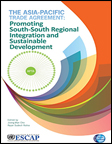 The Asia-Pacific Trade Agreement: Promoting South-South Regional Integration and Sustainable DevelopmentAs countries begin to depend on more each other, trade policy is helping achieve inclusive and sustainable development. Trade and investment are linked to the environment and social issues, and countries now realize that cooperation is necessary in approaching global and regional problems. The Asia-Pacific Trade Agreement (APTA), the oldest preferential trade agreement in the region, helps promote economic development and the adoption of mutually beneficial trade measures. This book gives an overview of the APTA and outlines potential benefits and challenges for members new to the APTA. The book details a possible road map for APTA and suggests that APTA move from the conventional preferential agreement to a comprehensive economic integration agreement by converting to FTAs in goods, services, investment, trade facilitation and non-tariff measures. Author: Joong-Wan Cho and Rajan Sudesh Ratna (editors) Year: 2017 Download Tags: Asia-Pacific Trade Agreement, Bangladesh, India, Sri Lanka, Regional Integration, Sustainability, UNESCAP Renewable Energy Sector in Emerging Asia: Development and Policies (TIID Working Paper No. 1/2017)Rapid economic growth in emerging Asia has led to a critical increase of greenhouse gas emissions. Transitioning to renewable energy sources would help reduce emissions. However, massive investment is needed to make that transition. According to this paper, targeted policy interventions are needed to facilitate trade and investment in the renewable energy sector and create “green jobs” in the low-carbon and resource-efficient sectors. Author: Masato Abe, Candice Lea Marie Branchoux, Jaewon Kim Year: 2017 Download Tags: Bangladesh, Energy, Governance, Hydropower, Employment, India, Myanmar, Sustainability, UNESCAP 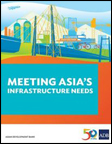 Meeting Asia's Infrastructure NeedsThis report estimates infrastructure investment needs in Asia and the Pacific for 2016-2030, updating the Asian Development Bank's assessment for 2010-2020 published in 2009. The report places developing Asia's investment needs at $26 trillion to maintain its growth momentum, eradicate poverty, and respond to climate change. While developing Asia's infrastructure, including its transport network and electricity generation capacity, has improved significantly over the years, it remains far from adequate – lack of reliable power supply continues to constrain economic growth and traffic congestion results in lost productivity, wasted fuel, and human stress. The report recommends $14.7 trillion investment for power and $8.4 trillion for transport. South Asia requires investments valued at 8.8% of gross domestic product. Author: Asian Development Bank Year: 2017 Download Tags: Asia, South Asia, Energy, Transport, Bangladesh, Bhutan, ADB, India, Maldives, Myanmar, Sri Lanka, Nepal 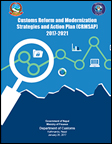 Customs Reform and Modernization Strategies and Action Plan 2017-2021The Customs Reform and Modernization Strategies and Action Plan 2017-2021 of the Nepal Department of Customs (DOC) aims to serve as a blueprint of Customs reform for the next four years, with a vision to support Nepal's initiatives toward economic and social prosperity. With Nepal seeing continuous increase of cross-border trade over the last decades, this Plan is being implemented to align Nepal toward international standards. It outlines the DOC's vision, mission, guiding principles, as well as strategies, such as expediting legitimate trade facilitation and enhancing Customs automation and data management, to create a conducive environment for seamless movement of cargo traffic to and from the borders, and help in lowering transaction costs through greater transport facilitation. Author: Nepal Department of Customs Year: 2017 Download Tags: Customs, Customs Valuation, Nepal, Trade Facilitation, Import, Export, Trade, Revised Kyoto Convention 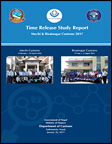 Time Release Study: Mechi and Biratnagar Customs 2017Time Release Study is a special tool developed by the World Customs Organization to measure effectiveness of operational procedures carried out by Customs, other regulatory agencies and private sector stakeholders in the standard processing of imports, exports, cross border and transit movements. A key activity identified in Nepal's Customs Reform and Modernization Strategies and Action Plan 2013-2017, it identifies the average time taken for clearance of consignments from entry to exit in the Customs area, enabling possible corrective measures to
improve performance. This Study was undertaken to support trade facilitation measures being introduced by the Nepal Department of Customs to reduce bottlenecks to faster Customs clearance, and promote seamless movement of cargo traffic to and from the Country. Author: Nepal Department of Customs TRS Working Group Year: 2017 Download Tags: Trade Facilitation, Time Release Study, Import, Export, Trade, Nepal, WCO 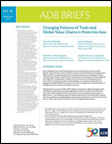 Changing Patterns of Trade and Global Value Chains in Postcrisis AsiaThis Asian Development Bank brief examines how patterns of trade and global value chains (GVCs) in developing Asia have changed since the global financial crisis. The paper reports that export slowdown in the region was caused by a combination of weak import demand for Asian goods in advanced economy markets, structural transformation and reduced import demand in the People’s Republic of China, and possible impact of increasing non-tariff measures. According to this paper, it further states that much of the weak import demand is likely
to be temporary — developing Asia gained a 1.5% increase in exports in 2016, after a 0.8% decline in 2015. Among South Asian economies, India and Sri Lanka are expected to have better export volume growth in 2016. Author: Ganeshan Wignaraja, Juzhong Zhuang, Mahinthan J. Mariasingham, and Madeline Dumaua-Cabauatan Year: 2017 Download Tags: Global Value Chains, Import, Export, India, Sri Lanka, Non-Tariff Measures, Trade Facilitation Time, Uncertainty, and Trade FlowsThis paper assesses the impact of international transit time and time-related uncertainty on bilateral trade, including their impact on trade costs. It concludes that international transit time matters primarily for South-South trade, while uncertainty is more important for North-North trade. Both factors are confirmed to be statistically and economically significant determinants of bilateral trade, including global value chains, and strengthens the ground on the emerging policy emphasis to address the overall costs faced by supply chain operators, including costs linked to uncertainty. Author: Jose Anson, Jean-Francois Arvis, Mauro Boffa, Matthias Helble, and Benjamin Shepherd Year: 2017 Download Tags: Trade, Trade Facilitation, Transport, South-South Trade Accumulating Trade Costs and Competitiveness in Global Value ChainsThis paper examines the implications of trade costs, including applied tariffs, transportation and insurance costs, on competitiveness at industry, national and global levels, and identifies where trade facilitation investment would have the highest social returns from the perspective of global value chains (GVCs). With trade costs amplified along GVCs, profitability of individual business operations are affected by incurred transaction expenses. The authors conclude that direct benefits of trade facilitation will be higher for countries that are not yet well integrated into international trade, but key traders who are at the core of GVCs also stand to gain much. Author: Antonia Diakantoni, Hubert Escaith, Michael Roberts and Thomas Verbeet Year: 2017 Download Tags: Trade, Tariff, Transport, Trade Facilitation, Global Value Chains South Asia’s Turn: Policies to Boost Competitiveness and Create the Next Export PowerhouseWill South Asia become the next global factory? By 2030 more than a quarter of the world’s working adults will live in South Asia. As the work force ages and labor costs rise in China and other East Asian countries, many eyes turn to South Asia. According to this report, to realize the region’s potential, countries in South Asia should increase regional and global integration, take advantage of agglomeration economies, strengthen firm capabilities, and improve the business environment. Author: Gladys Lopez‐Acevedo, Denis Medvedev, and Vincent Palmade Year: 2017 Download Tags: Bangladesh, India, Regional Integration, South Asia, Trade, WB Doing Business 2017: Equal Opportunity for AllGovernments including that of India have relied on Doing Business to provide insights into good practices worldwide. Doing Business 2017: Equal Opportunity for All presents quantitative indicators on business regulations that can be compared across 190 economies. It shows how South Asia can work to improve certain areas, including removing restrictions on women’s right to work. It also shows how South Asia has been the most successful region in terms of trading across borders. Bhutan, with a global ranking of 73, ranks highest among South Asian countries. Author: World Bank Group Year: 2017 Download Tags: Trade Facilitation, Ease of Doing Business, Transport, WB |



